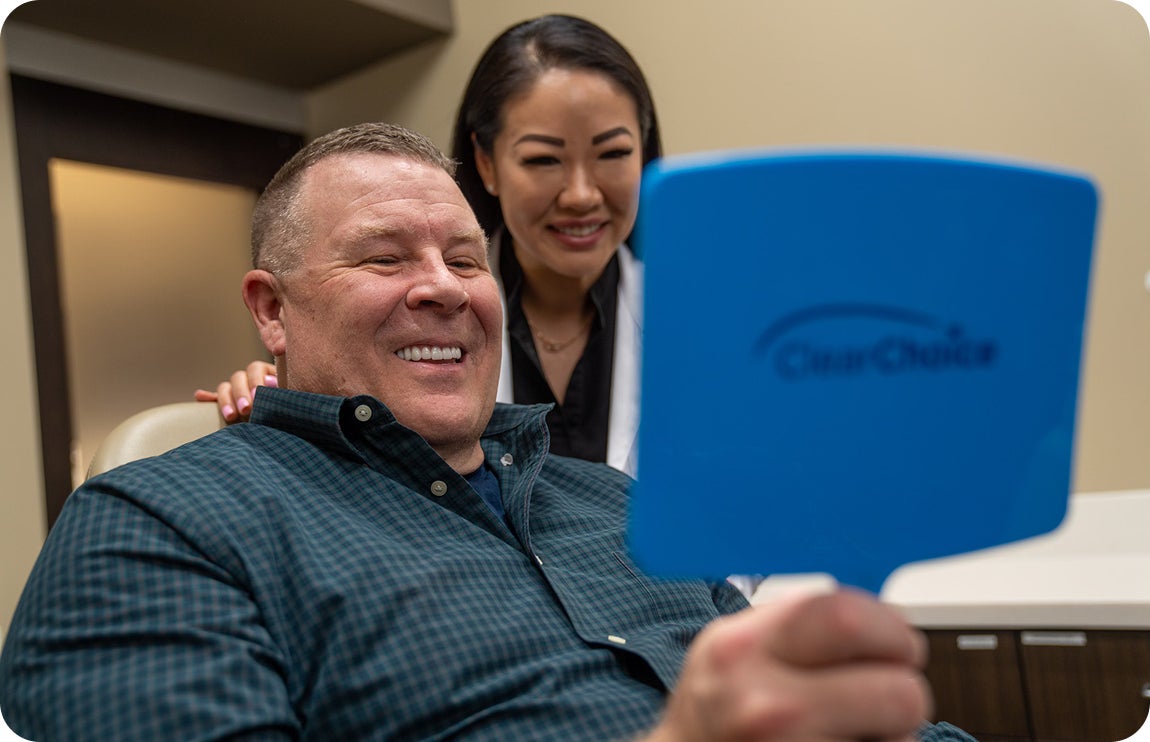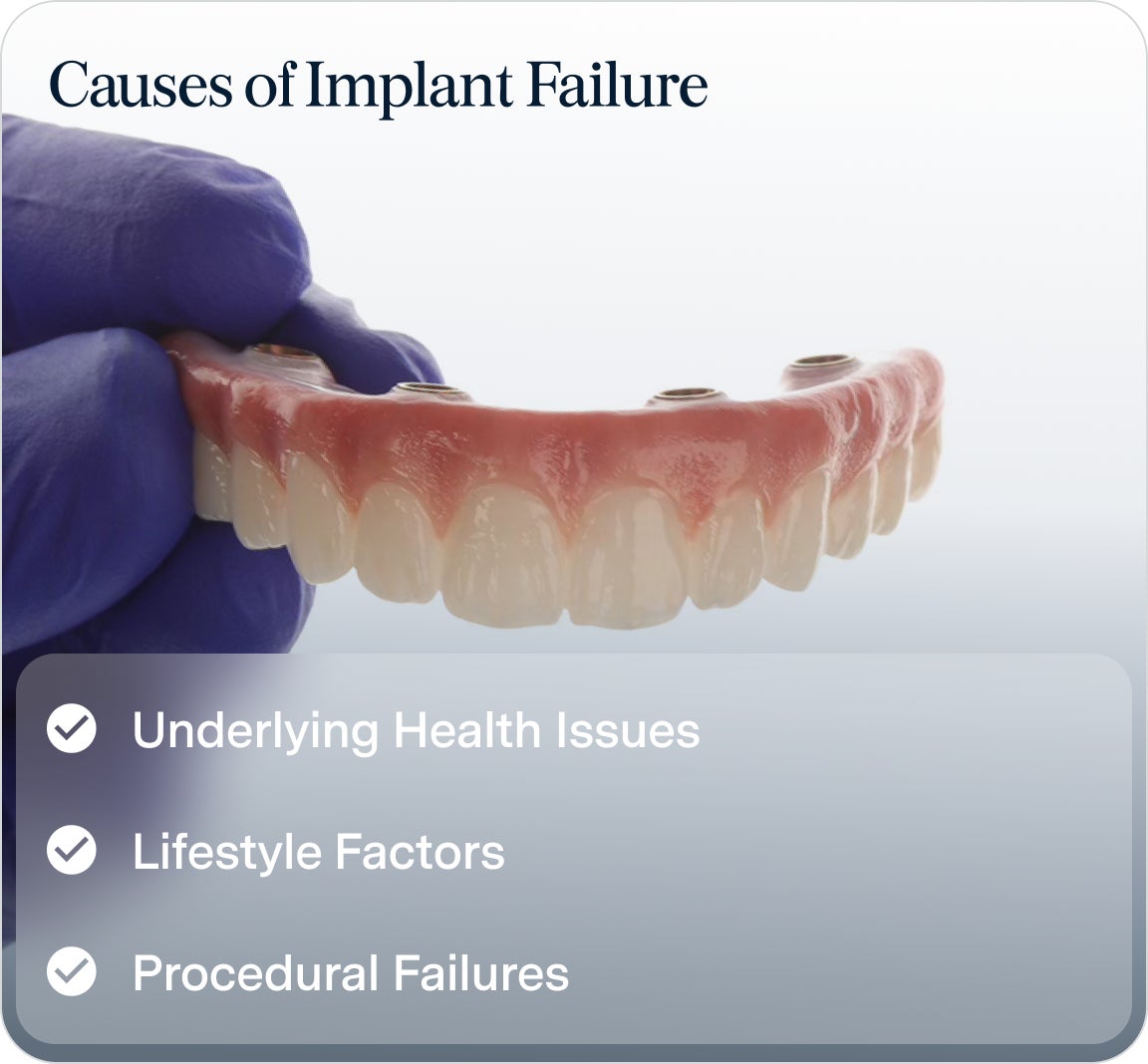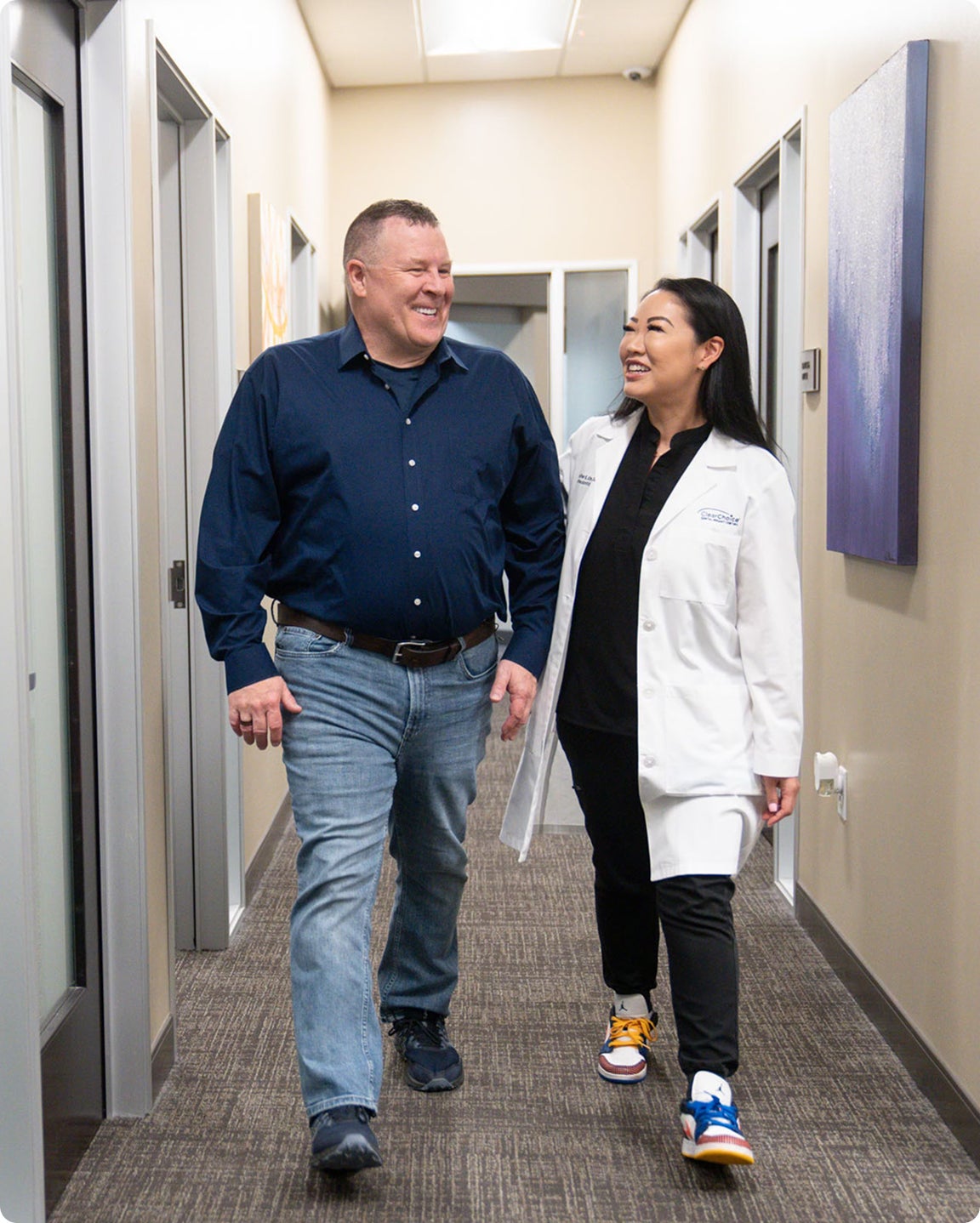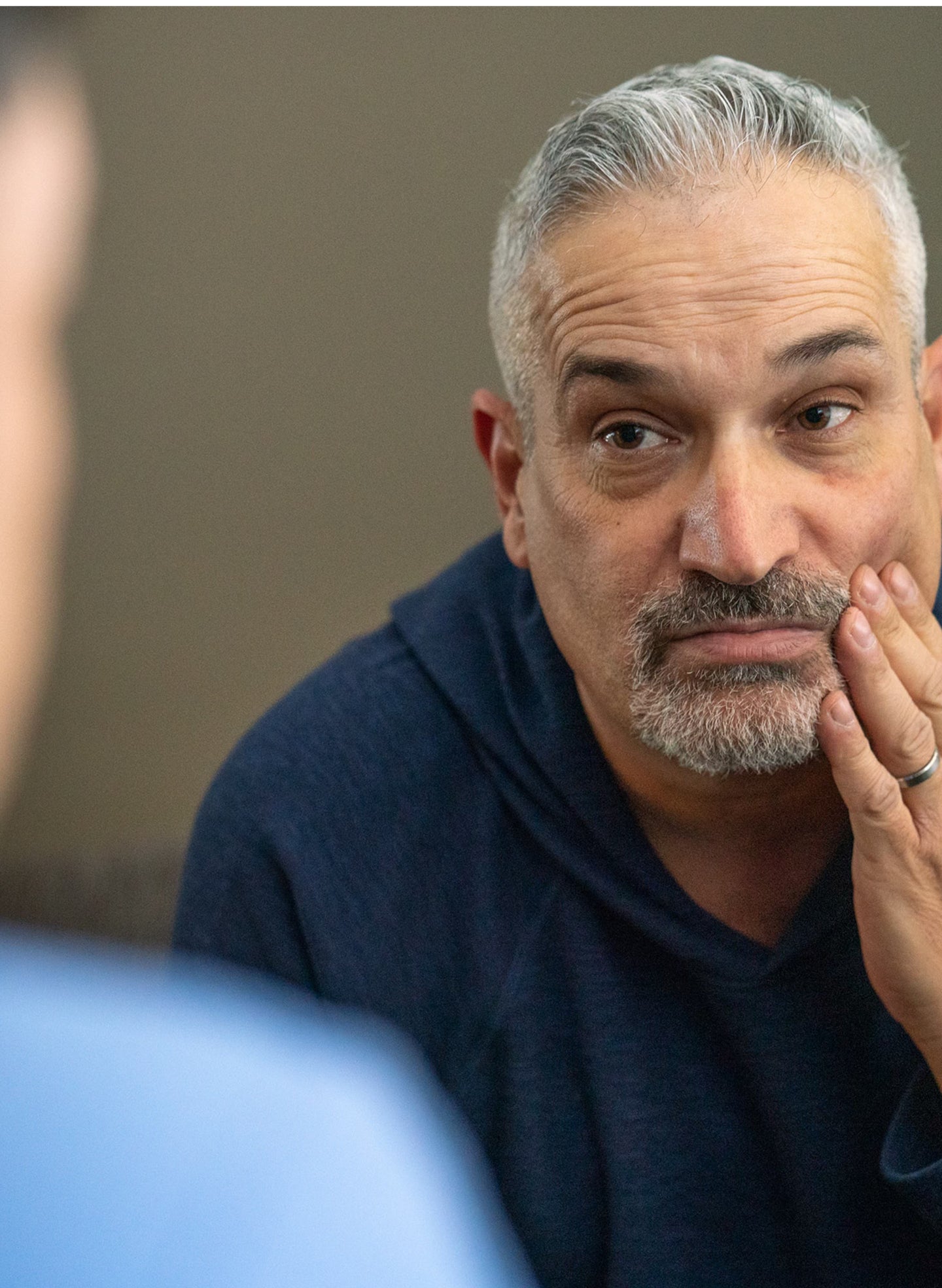Last updated 06.26.2025
What is the success rate of dental implants?
Dental implants have a 95% success rate. Learn what affects outcomes and how to help support long-term results.

Dental implants are one of the most trusted long-term solutions for tooth replacement and a major focus of care at ClearChoice. For over 20 years, our network of specialists has led the way in full-mouth dental implant restorations, single-tooth implants, implant-supported bridges, and more. Today, many ClearChoice centers also offer a range of prosthodontic solutions tailored to each patient’s needs, including conventional dentures and crowns.
In this blog, we’ll explore what drives the long-term outcomes of dental implants and the documented 95% success rate.

What is the success rate of dental implants?
National and global averages
Most studies show that dental implants have a survival rate of 95% or higher.¹ The first parameter of success is that the implant must fuse to the bone over several weeks of healing. This biologic fusing is called osseointegration of the implant. Bone actually generates around the implant and bonds to the implant surface. This creates a stable and immovable structure in the bone. The teeth will ultimately be attached to the immovable implant.
“Success” is also measured after osseointegration and details the important parameter of the long-term function of the implant—how durable and long-lasting it is within the bone, and how well it withstands daily use without requiring extensive maintenance. Studies show that even after 10 years, with proper care, titanium dental implants retain a 90% success rate. Success is influenced by factors like the patient’s overall health, bone density, and the condition of the surrounding tissue before and after implant placement.
Success rate by implant type or material
A big consideration when choosing dental implants is the material they’re made from.
Titanium implants are the most common—and most studied—option, and with few exceptions, the only implant screw that ClearChoice uses. However, alternatives like zirconia implants (a ceramic material) are also available in the field, the short and long term success of zirconia implants has been below 80%. Titanium has a long history of biocompatibility and successful osseointegration, allowing the implant to fuse with your jawbone and maintain osseointegration over time. Besides biocompatibility, titanium implants are strong and implant fracture is rare. Material matters, but provider experience and patient health often play a bigger role in long-term outcomes.

What can cause a dental implant to fail?
While the failure rate of dental implants is relatively low, understanding the potential risks can help you avoid complications.
Short-term vs. long-term failures
Even with high success rates, implant failure can occur. Understanding the “why” is key to prevention.
Short-term failures typically occur within the first few months due to infection, lack of osseointegration, overloading biting forces, or improper implant placement.
Long-term failures may happen years later and are often linked to chronic inflammation (like peri-implantitis) resulting in bone loss supporting the implant, overloading biting forces generated in the bone, rare implant fractures.
Patient health & lifestyle factors
Your overall health plays a major role in implant success. Risk factors include:
Poorly controlled diabetes
Autoimmune disorders
Certain medications that interfere with bone healing
Clinical/procedural factors
Even with excellent health, implant failure can stem from:
Improper implant placement
Inadequate bone density or bone volume to place an adequate size implant
Substandard materials or techniques
That’s why choosing the right provider is critical.

How to improve the success rate of dental implants
Importance of oral hygiene
Daily brushing and flossing with regular checkups with your prosthodontist will help keep your implants healthy and stable.
Choosing the right provider or specialist
Experienced clinicians use advanced diagnostic tools (like 3D imaging) to assess the amount of bone, bone density and placement strategy. They also provide thorough aftercare plans to support your recovery and results.
Post-procedure follow-up and care
Following your provider’s instructions post-surgery is just as important as the procedure itself. Routine check-ups allow early detection of issues before they become major problems.
Is the success rate different for everyone?
Yes—success can vary based on age, health, bone quality, and lifestyle.
Age and health conditions
While age alone isn’t a disqualifier, older adults may face more challenges due to:
Slower healing
Existing bone loss
Underlying health conditions
Still, many seniors experience excellent outcomes with the right care. But all the more reason to start this process as soon as possible.
Habits like smoking or teeth grinding
Smoking increases the risk of implant failure. Similarly, chronic teeth grinding can place undue stress on the implant and surrounding bone. Both issues can be managed with the right treatment.

Choosing a dental implant provider
The success of your implant doesn’t just depend on your body—it depends on who you choose to do the work.
Questions to ask
Did you have extensive training in implant therapy at the university level?
Do you have an established implant team of specialty trained providers?
What is your team members' experience in the implant field?
How many implants have you placed?
What kind of aftercare support do you have for your patients?
Success rates & experience
Choosing a provider with a strong track record and specialized experience in implants is important. The more implants they’ve placed—and successfully managed—the better your chances of a positive outcome.
Red flags to watch for
Does not offer personalized treatment plans
Lack of specialty training in implants
Does not explain how your specific bone anatomy and quality impacts your treatment
Rushes you through a consultation
Bottom line: dental implants have a high success rate
Dental implants are a safe, long-lasting option for replacing missing teeth. With proper care and the support of a qualified specialist, many patients enjoy results that last for decades.
In fact, that’s why we stand by our treatment plan with a Lifetime Warranty on zirconia arches. And we’re building on 20+ years of data and experience to keep getting those results even better. Schedule your free consultation, and see why hundreds of thousands have chosen ClearChoice to get their smiles back.
Schedule free consultation>
Dental implant success rate FAQs
What to do if an implant fails?
If your implant doesn’t heal properly or becomes loose over time, you still have options. A failed implant doesn’t mean you’re out of luck, it simply means your provider may need to adjust your treatment plan. In the case of the full arch implant restoration, a new dental implant can sometimes be placed at the same time the failing implant is removed. In other instances, the implant is removed, and the area is allowed to heal before another implant is placed. Sometimes bone grafting is needed to improve the healing of the implant site. Although implant failure is a rare event, only an experienced implant team has knowledge and skill in the best way to manage
the problem.
Are dental implants safe?
Yes. For most people, dental implants are a safe and reliable solution when performed by experienced providers.
How long do dental implants last?
With proper care, dental implants can last 20+ years—and often a lifetime.
What are the signs that a dental implant is failing?
Persistent pain, inflammation with swelling or bleeding, or movement in the implant are warning signs.
Can smoking cause dental implant failure?
Yes. Smoking is known to hinder healing and everyday maintenance of the bodies soft tissues and bone. While it cannot be isolated as to how much smoking influences your risk for implant failure, your implant provider will discuss that smoking increases the risk of abnormal healing, infection and implant failure.
Does age affect implant success rate?
While age can influence healing, many seniors still experience high success rates with proper care and preparation.
Sources:
¹National Library of Medicine - A Systematic Review of Survival Rates of Osseointegrated Implants in Fully and Partially Edentulous Patients Following Immediate Loading



